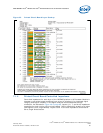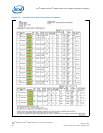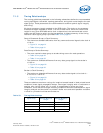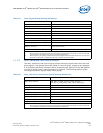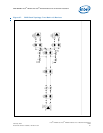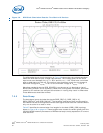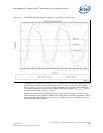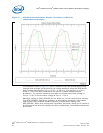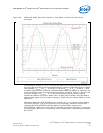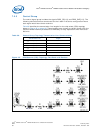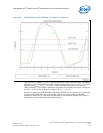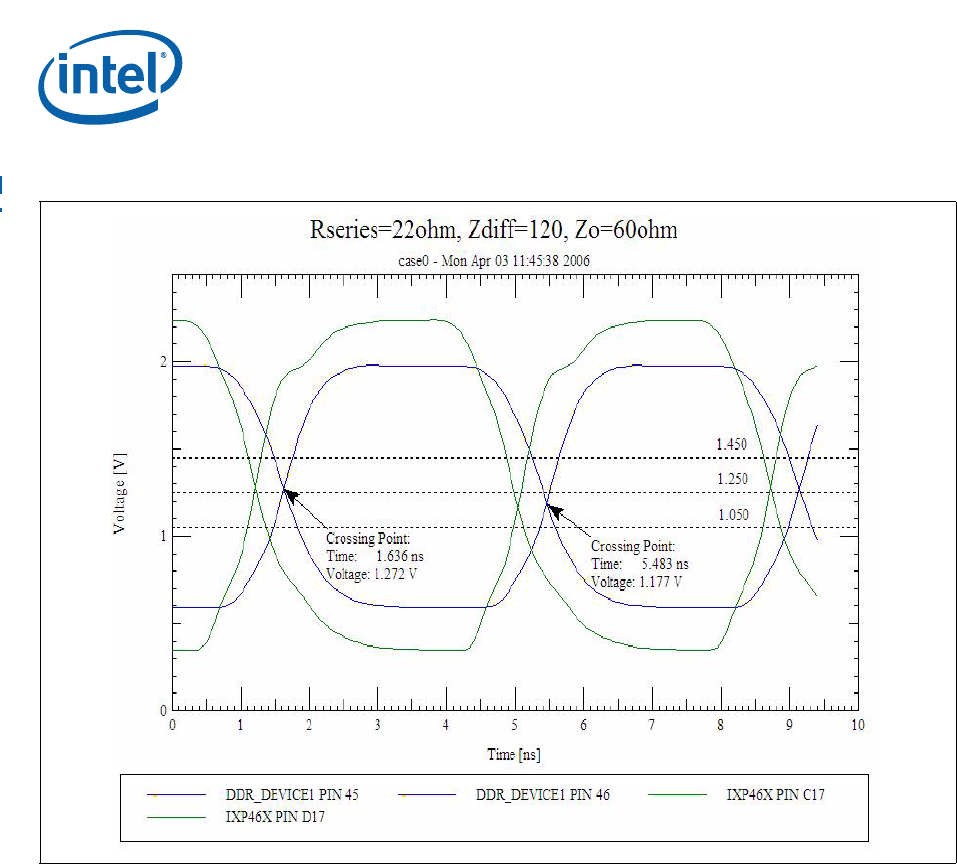
Intel
®
IXP45X and Intel
®
IXP46X Product Line of Network Processors—Category
Intel
®
IXP45X and Intel
®
IXP46X Product Line of Network Processors
HDD February 2007
92 Document Number: 305261, Revision: 004
The differential-clock-circuit simulation in Figure 38 shows that the voltage waveform
meets the DDR device input voltage requirements. The crossing point for the clock
input must occur between V
ix(min)
=1.05 V and V
ix(max)
=1.45 V and have a minimum
peak to peak swing of 700 mV. The receiver input waveform must also not exceed a
maximum voltage of V
in(max)
=2.8 V or the minimum voltage of V
in(min)
=-0.3 V.
Waveform results for device DDR_DEVICE2 is not shown as it is identical to that of
device DDR_DEVICE1 due to symmetry. When final routing data is available, simulation
results for all receivers are analyzed as variations in routing may result in differences.
These differences should be minimal.
7.2.2 Data Group
The data signal group includes the signals DDRI_CB[7:0], DDRI_DQ[31:0],
DDRI_DQS[4:0], and DDRI_DM[4:0]. The following simulations were constructed for
the 2 bank x16 device configuration where each signal would have two receivers where
only one is active for a read or write.
Table 37 identifies the transmission line lengths for the data (DDRI_DQ5) topology
shown in Figure 39 on page 94. These lengths were chosen as realistic goals given the
IXP45X/IXP46X network processors to DDR device body to body separation of no more
than 500 mils.
Figure 38. DDR Clock Simulation Results: Two-Bank x16 Devices




